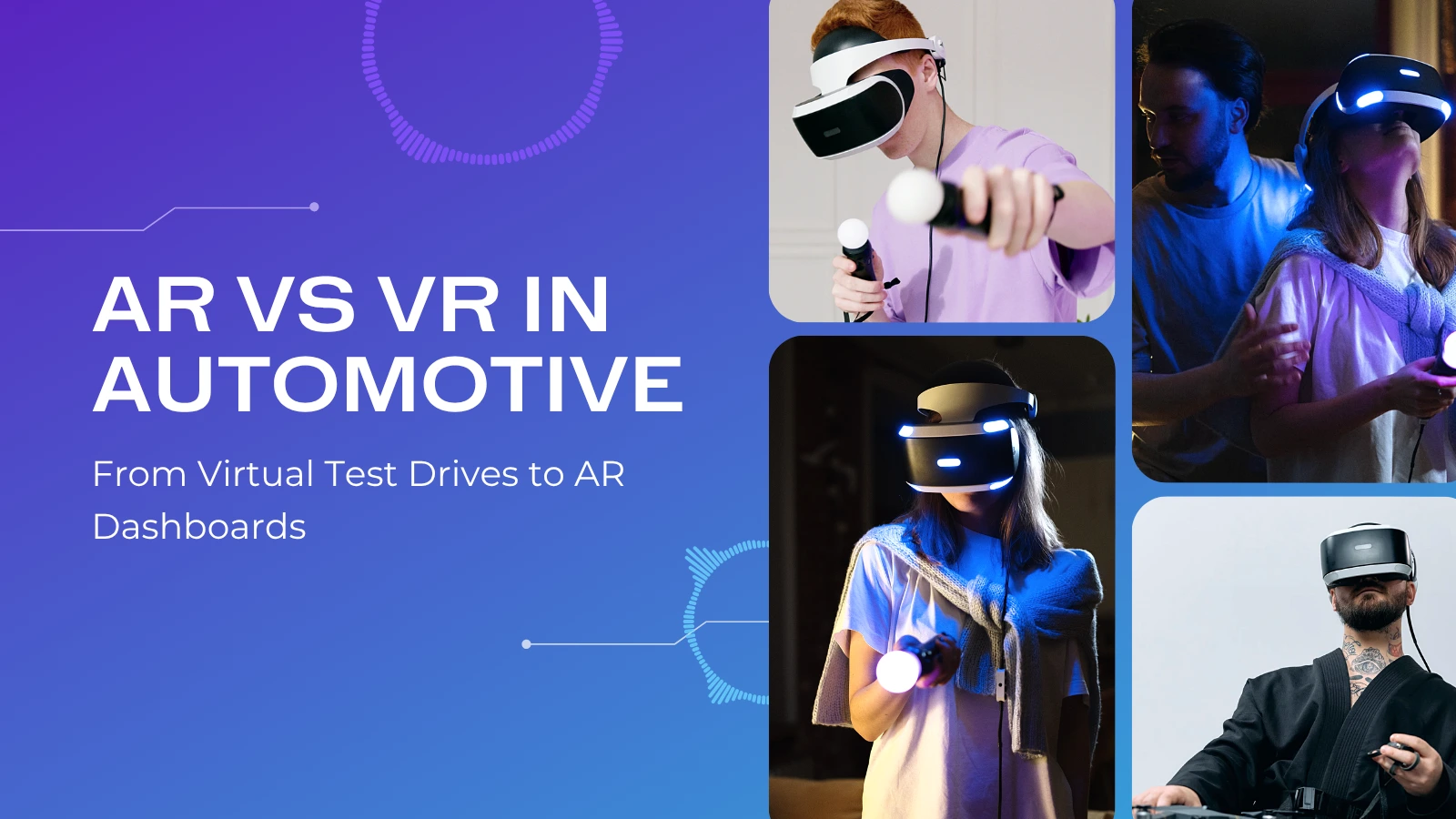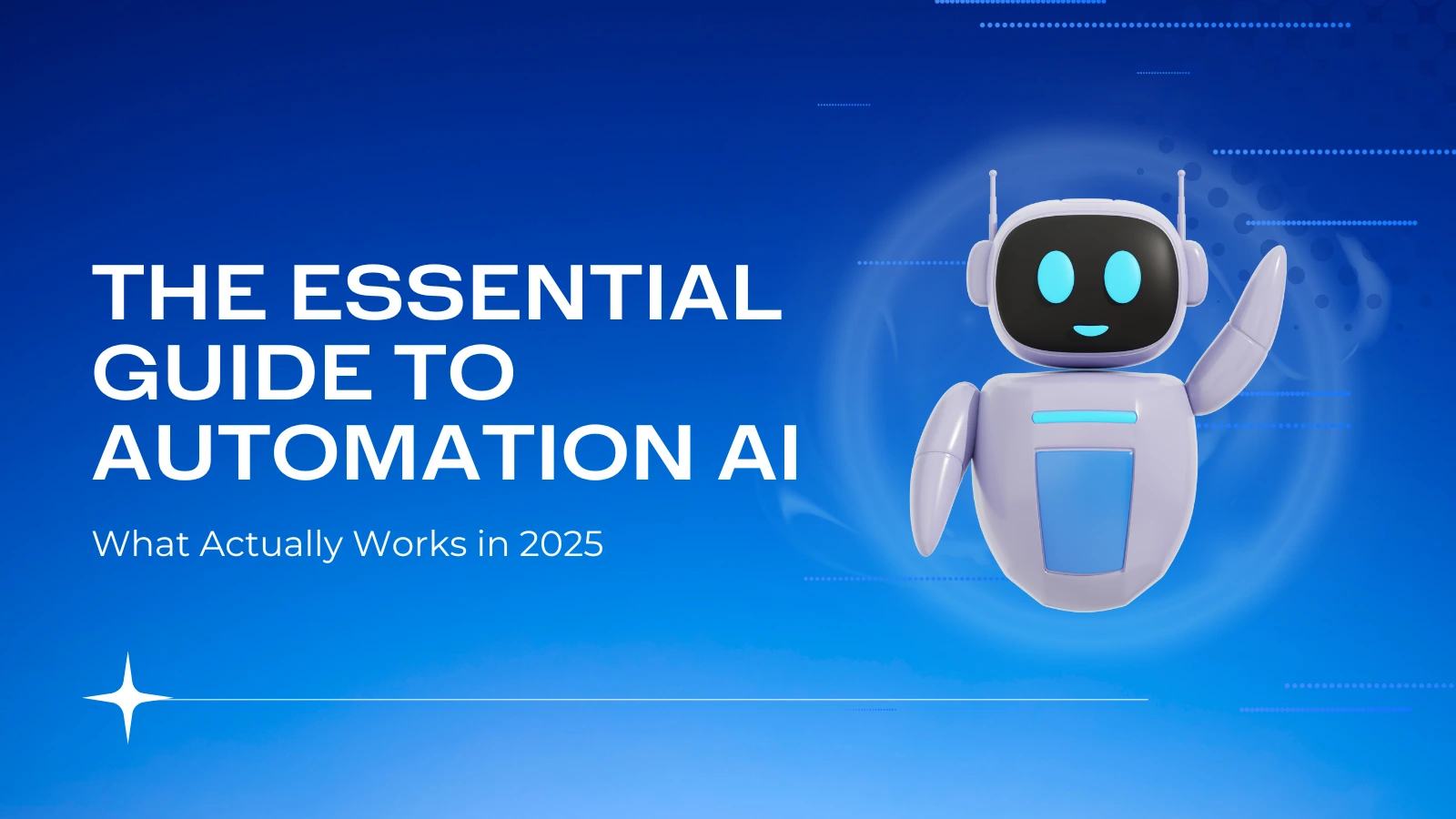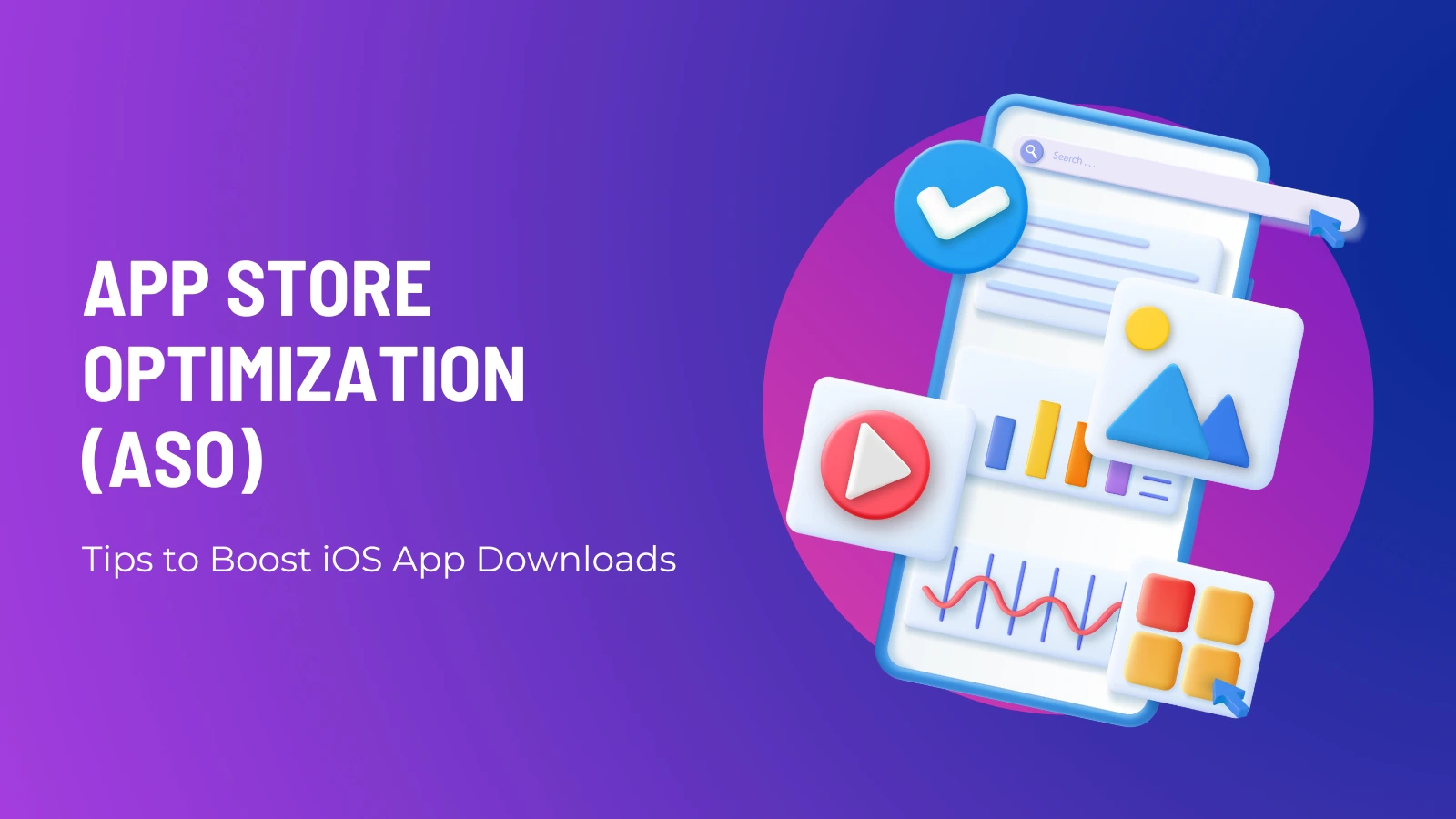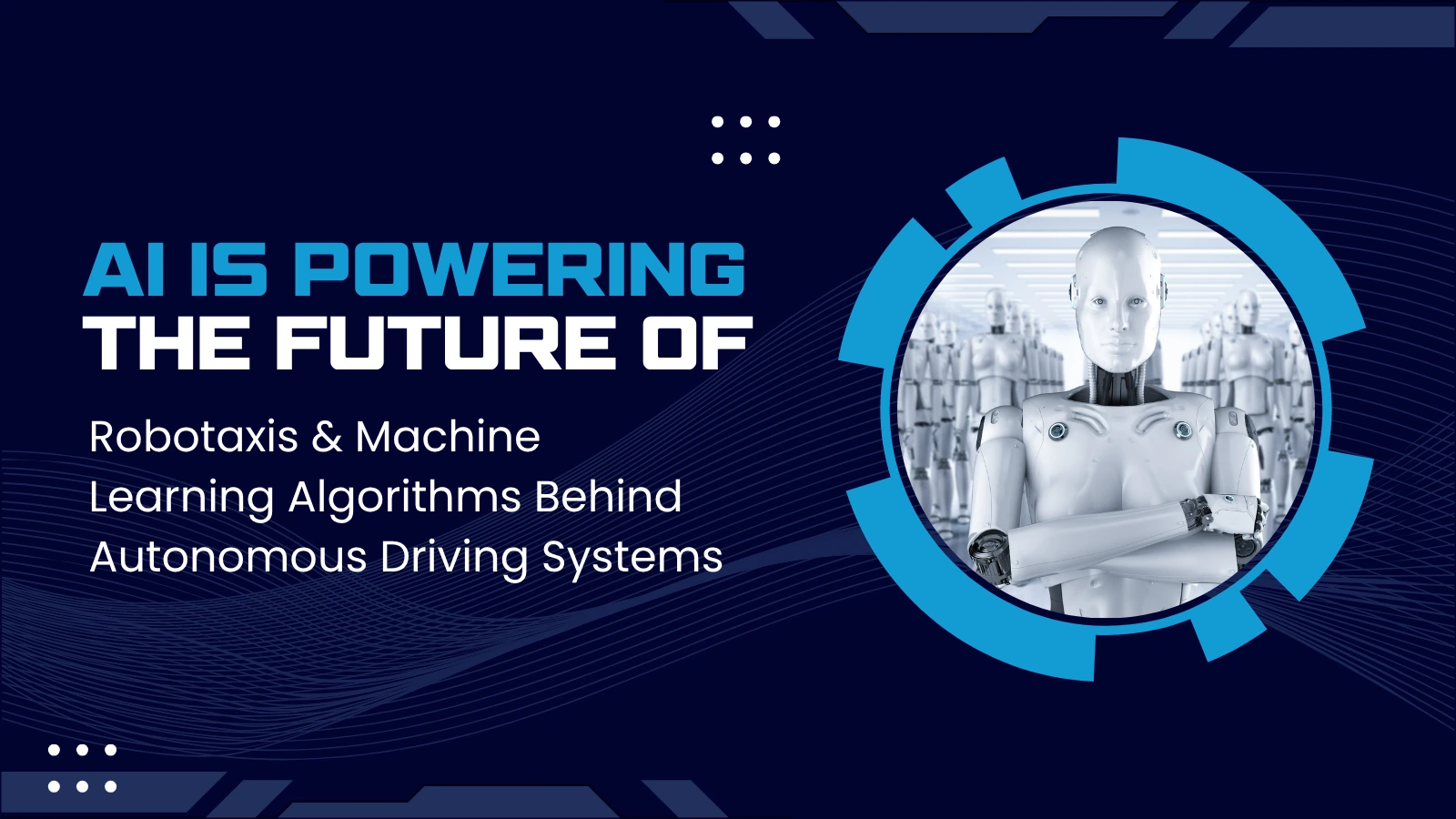AR vs VR in Automotive_ From Virtual Test Drives to AR Dashboards
The Rise of Immersive Technology in The Automotive Industry
The automotive industry has experienced transformative changes in the recent years, all thanks to breakthroughs in immersive technology. The most notable changes are due to Augmented Reality (AR) and Virtual Reality (VR). The debate of ar vs vr is not restricted to nerds anymore, but has shifted to the boardrooms, R&D, and even the showrooms of top automobile manufacturers. Understanding the different roles these technologies play in enhancing the automotive experience is valuable as both have unique advantages.
As defined, AR adds virtual contextual information to an existing physical environment whereas VR builds a simulated world that fully replaces the real environment.This essential distinction defines their different uses in the automotive sector. Consequently, the debate on "vr vs ar" for automotive design and customer interaction has become more complex.
Now, not only are car makers applying AR and VR to product design but also to marketing, training, and after-sales support. AR dashboards, virtual test drives, and remote maintenance are no longer a fantasy but reality today. This innovation is being driven by expert AR VR app development services that design bespoke solutions for the automobile industry. These services enable businesses to leverage the potential of immersive technology to create safer, more efficient, and more interactive vehicles. As we progress deeper into this new world, the role of AR and VR in the automotive sector is only slated to increase.
Virtual Test Drives: The Future of Car Buying
One of the most innovative and consumer-oriented uses of VR in the auto industry is the virtual test drive. Traditionally, a test drive meant going to a dealership, making an appointment, and taking precious time behind the wheel of an actual car. But now, with the evolution of VR technology, potential customers can get a feel of a car from their own homes. This revolution not only saves time but also unfolds new avenues of opportunities for both manufacturers and customers.
Virtual test drives use premium simulation that mimics the interior, exterior, and driving performance of a car. Customers can virtually sit in the car, touch its features, and even drive it across various terrains and weather conditions. It gives users a real sense of the comfort, aesthetics, and handling of the vehicle—information that typically needed a test drive.
This is also in the interest of car manufacturers and dealerships, as it cuts costs in operations. They no longer have to keep huge inventory levels for test drives, and the scope of their advertisement can spread across the world. VR test drives are especially useful during car launches, enabling people to test a new model before they are available at showrooms.
In the background, AR VR application development services are vital in creating these virtual experiences. These services guarantee that the simulations are realist, easy to use, and compatible on different devices. Additionally, as the models of cars change, the apps can be simply updated so that the virtual test drive is accurate and up to date. In the current debate of ar versus vr, VR is definitely leading the way in transforming the way individuals experience and assess automobiles prior to purchase.
Augmented Reality Dashboards: Increasing Driver Awareness and Safety
While VR excels at pre-purchase experiences, AR steals the show with in-vehicle applications—most especially with creating AR dashboards. These dashboards utilize AR technology to display critical driving data directly onto the windshield or a special display screen. This allows drivers to have access to real-time data like speed, navigation instructions, and collision alerts without shifting their gaze from the road.
AR dashboards make driving safer by reducing distractions. Rather than looking down at a conventional dashboard, drivers get visual reminders within their field of vision. Certain advanced systems even cue pedestrians, road signs, and lane markings, further enhancing situational awareness. BMW and Mercedes-Benz have already deployed AR HUDs (heads-up displays) on certain models, raising the bar in driver assistance technologies.
The application of AR in dashboards goes beyond navigation. It can be combined with voice commands and AI assistants to deliver context-related information. For example, if a driver utters, "I'm hungry," the AR system will offer restaurants in the vicinity and show their locations on the windshield. Such features create an added layer of convenience that changes the face of driving.
Building such advanced systems calls for both hardware and software expertise. That is where AR VR application development services come into play. Such service providers partner with car manufacturers to develop, test, and integrate AR solutions that are not only functional but also pass safety standards. Comparing vr and ar, AR is the clear leader in real-time, in-car applications that provide safety and interactivity.
Training and Maintenance: Enabling Technicians With AR and VR
AR and VR technologies are not only useful for customer-facing applications but also provide revolutionary value in training and maintenance. Automotive technicians, engineers, and assembly line workers alike can benefit from immersive training modules developed based on VR. These modules replicate difficult repair situations, assembly processes, and diagnostic tests and enable workers to practice their skills safely.
Meanwhile, AR is also being used to great effect in real-time maintenance assistance. With AR glasses or tablets, technicians can be given step-by-step visual guidance superimposed on the real vehicle parts. Not only does this accelerate the repair process but it also lessens errors and enhances efficiency. Certain systems even permit remote specialists to direct on-site technicians during complex repairs, making collaboration and learning easier.
Their implementation is especially useful in minimizing downtime and providing consistency in service quality. It is a strategic advantage for businesses operating large vehicle fleets or multiple service centers by standardizing training using VR and improving maintenance using AR.
These are achieved through sophisticated AR VR app development services that focus on automotive solutions. These services collaborate with OEMs and service providers to develop personalized training modules and maintenance aids. The outcome is a more competent workforce, reduced operational downtime, and increased customer satisfaction. In the ar vs vr debate, while considering the advantages and disadvantages, both technologies are of equal value when used for backend operations such as training and maintenance.
Marketing and Consumer Interaction: Sales Driven by Immersive Experiences
Marketing within the automotive space has dramatically changed thanks to the adoption of AR and VR. Consumers today are technologically oriented and look for participative, customized experiences. Auto brands are reacting by utilizing immersive technology to develop virtual showrooms, AR catalogs, and interactive ad campaigns.
VR enables prospective customers to walk through the features, options, and even tour the factory virtually. All this builds an emotional connection with the brand that has a major impact on buying decisions. Virtual showrooms are accessible from VR headsets or even web browsers, making them very convenient.
AR, on its part, is being utilized to make printed marketing materials come alive. Users can use a smartphone or tablet to scan a brochure and view a 3D model of the car, look around its interior, and animated features. Some manufacturers have created AR apps that enable users to put a life-sized car on their driveway, giving them a realistic preview without setting foot in a dealership.
These cutting-edge marketing instruments have been created in collaboration with AR VR app development services. Such services integrate smoothly with CRM, deliver behavioral analytics on consumers, and provide scalable solutions for global campaigns. Comparing vr versus ar during marketing, both of them possess their strengths, and a hybrid solution usually delivers the best outcome.
Ultimately, the desire is to produce memorable, informative, and engaging experiences that build brand loyalty and enhance sales conversions.
The Road Ahead: Future Trends in AR and VR for Automotive
Looking ahead, it's obvious that the application of AR and VR to the automotive industry is in its infancy. But the rate of innovation indicates that more advanced applications will soon be coming on line. One of the key challenges is the merging of AR and VR into mixed reality (MR) solutions that offer both the strengths of each platform. These technologies in combination may enable more effective training modules, interactive diagnostics, and customer experiences that easily transition between real and virtual worlds.
Another exciting trend is the combination of AR and VR with artificial intelligence and machine learning. Such combinations will allow systems to learn from user behavior and real-time adaptability, providing more tailored and optimal solutions. For instance, AR dashboards could learn a driver's behavior and configure displays in response accordingly, while VR environments could personalize training sessions according to performance.
The growing pervasiveness of 5G connectivity will further empower the functionality of AR and VR applications. Improved data transfer speeds and reduced latency will enable remote diagnostics, real-time updates, and shared virtual workspaces to become even more possible and productive.
AR VR application development services will take center stage in actualizing these innovations of the future. Their advice will be critical in overcoming technical issues, making compliance with automotive safety regulations, and providing user-focused designs. As time goes by, the ar vs vr debate will be replaced by a more hybrid approach that harnesses the potential of both technologies.
Conclusion
In short, the automotive future will be shaped by immersive technology. It's all about virtual test drives, AR-enabled dashboards, technician training, or immersive marketing. AR and VR will revolutionize every aspect of the driving experience. With the help of expert development services, these technologies will not only change the way we produce and sell vehicles but how we drive and repair them in the future.
Subscribe Now
Get the weekly updates on the newest brand stories, business models and technology right in your inbox.
More Blogs
The Essential Guide to Automation AI: What Actually Works in 2025
AI Automation has demonstrably reshaped the workings of businesses by processing data and completing repetitive tasks faster and more efficiently than human workers. To illustrate, AI systems can now examine vast amounts of data, simul...
App Store Optimization (ASO) Tips to Boost iOS & Android App Downloads
The process of increasing your program's exposure and download volume in the Apple program Store is known as app store optimization, or ASO. By customizing the right keywords, metadata, and user interaction metrics, ASO, like Search En...
How AI is Powering the Future of Robotaxis & Machine Learning Algorithms Behind Autonomous Driving Systems
Robotaxis are fast becoming a science fiction dream turned reality, revolutionizing the way individuals move around cities. Robotaxis—autonomous vehicles that can transport people without the need for drivers—is revolutioni...

 Awards & Recognition
Awards & Recognition








